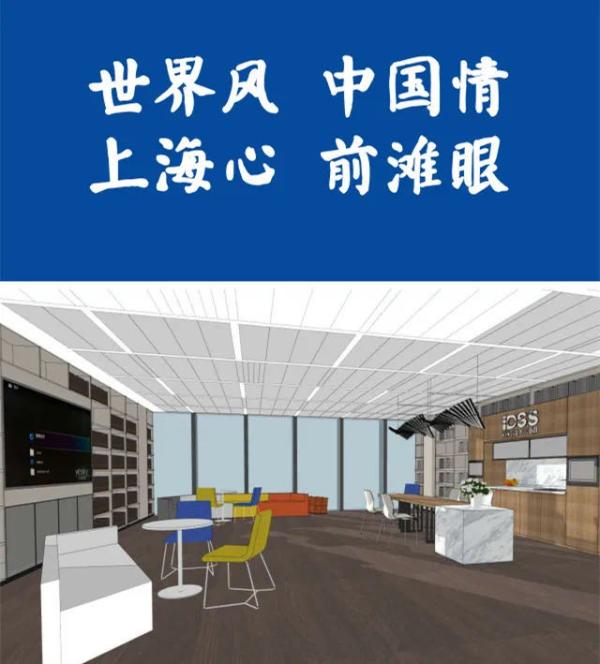Looking at the front beach | Two KDFs for improving the quality of SMEs
Editor’s note:This paper is an extract of the research results of the supporting project "Research on the Strategy of Strengthening the Quality of Small and Medium-sized Enterprises under the Strategy of Strengthening the Quality" undertaken by the National Social Science Fund in June, 2019, and published in the published "Watching the Tide on the Foreshore: Watching and Overlooking". Now the full text is reproduced in two phases.
guide reading
Small and medium-sized enterprises (SMEs) are an important part of China’s national economy, the largest enterprise group with the most active innovation in China, the market main body providing products and services, the main body responsible for quality and safety, and the main force for quality improvement. Through visiting 44 small and medium-sized manufacturing enterprises in Zhejiang Province, the research group selected four enterprises, including Donghai Water Meter, Axilong Shunhua, Skyline Transformer and Yilei Wool Textile, as an investigation of "Made in Zhejiang" and some enterprises certified by it, to explore the common behavior characteristics, practical experience and methods of improving the quality of manufacturing small and medium-sized enterprises, and to extract commonalities and merge similar items in order to serve the wider small and medium-sized enterprises.
First, sample insight: extraction of commonness of quality improvement of excellent small and medium-sized enterprises
Interviews with four sample enterprises included the founders themselves or the designated spokespersons, executive executives, technical executives and quality directors. Although they are in different industries and express themselves in different ways, no one deliberately flaunts the system certification to beautify themselves. The quality issues they are generally more concerned about and emphasize invariably point to "the next working procedure is the customer"-demanding a broader quality radiation sector. They extremely reject suppliers with unstable quality and will never tolerate their own defective products flowing downstream, which will affect the overall use experience. Quality and quantity must depend on reliable raw materials, reliable design, advanced and sophisticated equipment, and a high-quality skilled team. These factors are inseparable. Repeatedly facing the trivial, boring and complicated "man-machine material method environmental measurement" every day requires great responsibility, patience, determination and systematic thinking ability. Because it contains too much knowledge that needs to be accumulated for a long time at the technical and empirical levels, it is undoubtedly necessary to advance the necessary human, financial and material resources to support the quality improvement.
They may not know the definition of "big quality" exactly, but they all understand the factors related to the growth of their own enterprises, including but not limited to the facts of individuals, departments and "small circles" in the factory, and should also consider the connection of quality assurance systems between upstream and downstream factories and even their own industry environment. Just as an ancient English folk song sang: "If you lose a nail, you break a shoe;" Broke a shoe and folded a war horse; Fold a war horse and hurt a knight; Wounded a knight and lost a battle; Lost a battle and lost an empire. "
(A focused and pragmatic enterprise
Relying on decades of unremitting cultivation, four "small and beautiful" enterprises have built a "moat" of word of mouth, goodwill and channels in their respective industries; But focusing on "head products" also means giving up some "easy markets" that can make quick money.
In Dialogue with Sony, Ren Zhengfei said: "If we only focus on backward markets and then focus on developed markets after success, then when you finish the countryside, it will have been abandoned by the times. Because the times are developing too fast. "
East China Sea Water Meter started from China and Hongkong market, and has made the water meter with the highest range ratio in the world for 22 years. Skyline transformer "only wants to be the best transformer", and is determined to follow the State Grid and South Grid; Axilong Shunhua’s "technology for market" is only available for the perennial orders of 80% of the world’s "head brand" lipsticks; Yilei wool spinning (see Figure 1) finally saw the world pole of worsted cashmere yarn after breaking through the Red Sea again and again.
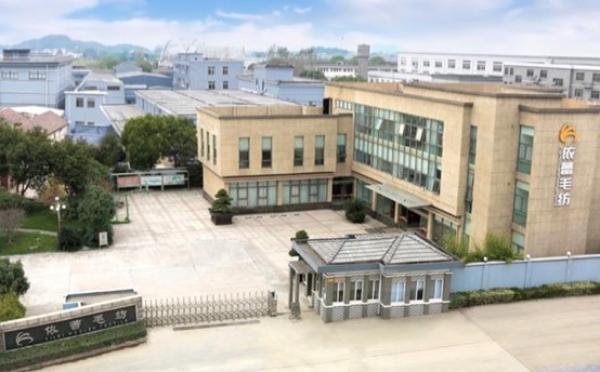
Figure 1 Zhejiang Yilei Wool Textile Co., Ltd. (located in Deqing County, Huzhou City, Zhejiang Province)
(2) Non-mainstream enterprises that keep their duties.
Researcher Jin Bei, an economist, worried many years ago that "there are some phenomena worth studying and causing great controversy in strategic choice", which means that manufacturing enterprises "entered industries that are not more advanced but more profitable" and cross-subsidized their main businesses (manufacturing products) with the income from new "non-main businesses".
Shen Guoliang (see Figure 2), the founder of Yilei Wool Textile, declined to participate in foreign provincial capital real estate projects in 2014; Zhu Shengyao, the founder of Axilong Shunhua (see Figure 3), was also ridiculed as a "fool" because he did not want to wade into real estate; There is no "strategic distraction" in the East China Sea water meter and sky transformer. Their common direction of action only focuses on the high value-added end of products, "missing" the "good opportunity" to rapidly enlarge the scale of wealth.
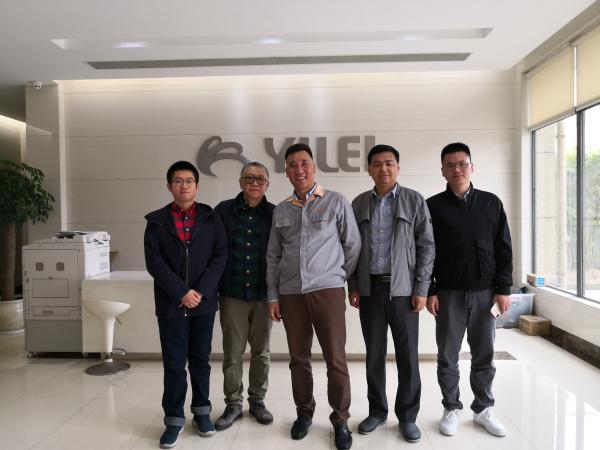
Fig. 2 Shen Guoliang (middle), founder of Yilei Wool Textile, takes a group photo with the research group (picture provided by the research group).
The four model enterprises unanimously choose "not to seek listing". Who can guarantee whether investors are willing to "give up short-term interests and markets"? The more stakeholders, the more difficult it is to form a key consensus. Under the operation of capital, it is really difficult for enterprises that focus on research and consider the long term to grow. The integration of advanced resources and the research and development of new products are all slow variables, but investors are not all idealists.
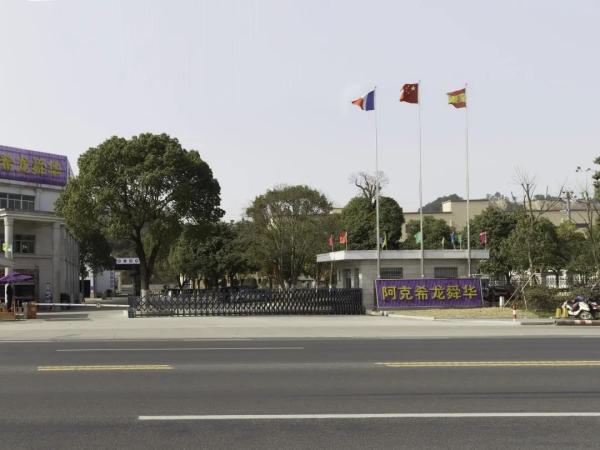
Fig. 3 Zhejiang Akshilong Shunhua Aluminum Industry Co., Ltd. (located in Shangyu District, Shaoxing City, Zhejiang Province)
(C) Endurance-oriented enterprises with lasting leadership
As of 2019, Donghai Water Meter, the oldest of the four companies, has been in business for 46 years. The founder, Mr. Yuan Liding, has passed away for one year and is now taken over by his children. The youngest is Yilei Wool Textile, which has been in business for 20 years. After 70, founder Shen Guoliang is already planning the future handover driven by equity reform.
Their individual life trajectories are superimposed on the turbulent process of reform and opening up, accompanied by the collective unconsciousness of farmers and young people in small towns in Shan Ye, which is full of vivid and colorful historical concreteness. Mr. Yuan Liding, a villager from Siming Mountain, started in a village-run small factory. Mao Saichun and Zhu Shunfeng, the founders of Sky Transformer (see Figure 4), both teachers, contracted the county-run factory; Mr. Zhu Shengyao started as a school-run enterprise with borrowed money; Shen Guoliang, an unemployed youth, started his counterattack by renting factory equipment. For a long time, they are partial to the hometown of catalpa. They hold the craft and shake hands with the world.
The difficulty of starting a business in the early stage is similar, which has shaped their psychological tendency system of distinguishing right from wrong, judging the merits, and making profits and losses; Projected into various decision-making, "being self-interested and not harming others" is a consistent theme. The formation of corporate culture depends on the words and deeds, patterns and beliefs of decision makers, and every decision also exerts a subtle influence on employees’ ideas with the same stable tendency.

Fig. 4 Zhejiang Tianji Transformer Co., Ltd. (located in Jiangshan City, Quzhou, Zhejiang Province)
(D) focus on paranoid technology control enterprises
A lot of research on small and medium-sized enterprises, many criticized the serious lack of research and development of products invested by enterprises, and even almost no research and development. The willingness of product research and development and innovation is strongly related to technical ability, equipment level and production management level. The annual output value of these founder-driven enterprises is not high in the head echelon of the industry; They and the team know very well that the output value and scale can’t sum up everything, and the lack of innovation means that enterprises abandon the future-"head effect" means a high threshold and technical content that is directly proportional to rich profits. How does technological innovation become the first driving force? Efforts should be made to provide high-value differentiation in R&D and design, to realize high-value differentiation by spending a lot of money on equipment, and to ensure high-value differentiation by creating precise production in details. Quality management is the only way to consolidate and transform technological innovation achievements.
Donghai Water Meter (see Figure 5) can persist in developing a new product for 11 years, winning the technical shopping with European enterprises. The pleasure of Yuan Liding in his later years is to work hard to write standards; Zhu Shunfeng is in charge of Skyline Marketing. He refuses all entertainment and likes to hide in the house to ponder the power grid demand. Both Mao Saichun and Shen Guoliang are willing to spend tens of millions of yuan to update their equipment; Shen Guoliang also likes to reform the imported production line. Mao Saichun prefers the latest testing instruments. She even requires that the self-inspection level must simulate the equipment, environment and status of third-party testing institutions.
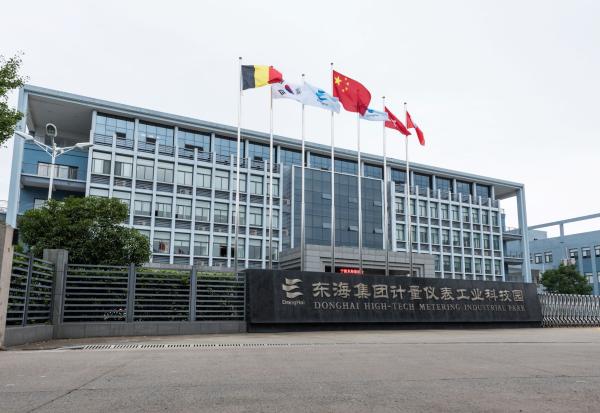
Figure 5 Ningbo Donghai Group Co., Ltd. (located in Haishu District, Ningbo City, Zhejiang Province)
(E) Inclusive growth of progressive enterprises
The two DNA—— of Toyota defined by "Toyota Way"-continuous improvement and respect for people, and "the father of Total quality management (TQM) in China", Academician Liu Yuanzhang spoke most thoroughly before his death: whether the quality assurance system is successful or not must take the interests of employees into consideration. Continuous improvement is a long-lasting persistence, involving the top managers of enterprises, the whole management, every worker and every link. The labor force is no longer a resource that can be squandered at will, and the concept of employment is also one of the improvements, which is the basis of full participation.
Omitting the process and looking at the current situation, the employment of these four enterprises can increase employees’ sense of dependence on the boss and the enterprise with long-term mutual benefit. 97% of Yilai Wool Textile is local employees, and more than 40% of them have bought commercial houses in the county where the house price is not low, and the whole factory is open to the county TV University for free study; More than one-third of Axelronshunhua employees own private cars (see Figure 6), and most local employees are engaged in high-paying management and technical work; Due to retirement, the number of local workers in Sky Transformer and Donghai Water Meter has decreased year by year, but the old employees can stably receive the corresponding retirement benefits issued by enterprises. In addition, the absorption of "the second generation of the factory" and "the third generation of the factory" regardless of their place of origin has been included in the HR planning of these enterprises.
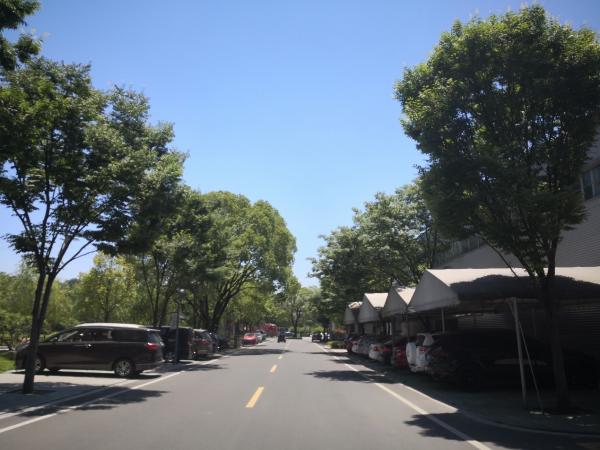
Fig. 6 Main roads and parking spaces of Axilong Shunhua Shangyu Factory.
(6) upgrade-oriented enterprises by analogy.
The upgrading and transformation of industrial enterprises is a long-distance running that requires endurance and determination. Researcher Jin Bei of the Institute of Industrial Economics of the Chinese Academy of Social Sciences pointed out: "The common feature of the transformation and upgrading of various enterprises is that they rely more on technological innovation."
The advantages of quality and cost are the constant theme of industrial competition. If an enterprise aiming at specialized manufacturing can occupy one or several links in the division of labor system and form the advantages of production and service with equal or better quality and relatively low cost, it is expected to become a leader in the industry. However, it is easier said than done, and it is difficult to search for the entry point of "upgrading"-how to maximize the technology, art, quality and service of the main products? "One after another" of "products+services" are integrated and extended, and higher value-added links are marked in the competition. All four sample enterprises use competition to force themselves to "think up".
The "internet plus Water Meter" of the East China Sea Water Meter has become the first choice for water supply big data intelligent services for many water companies; Skyline Transformer has built its own long-distance logistics fleet with specially-made large trucks (see Figure 7), which extends the meaning of "leaving the factory" to UHV construction sites thousands of miles away. Shunhua is embedded in the global synchronous research and development system of each head brand; Yilei wool spinning combined with Huzhou traditional silk weaving raw materials, cracked the once unique "real silk cashmere" in Europe-men’s real silk cashmere POLO shirt. ARMANI was priced at RMB 10,924, TOMFORD was RMB 12,099, and the domestic products supplied by Yilei could be sold at RMB 8,000!
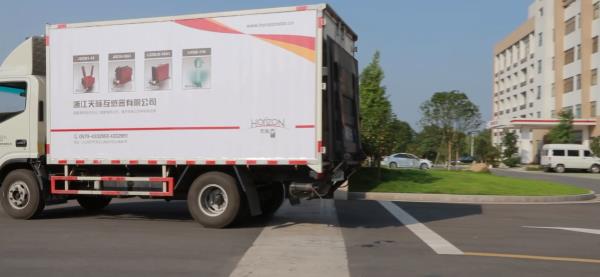
Figure 7 Sky Transformer Logistics Team
It is not difficult to say that those who are difficult can’t and those who will. Breaking the inherent thinking is mostly a very small contact, which drives the enterprise to upgrade to a higher level of organizational change and achieves "beyond competition" that stands out from the homogenization pattern.
Second, KDF analysis: quality improvement is an economic activity that depends on people.
Based on the extraction of similar items to investigate the quality improvement behavior of enterprises, the research group tries to align the two classical theories of "quality of top leaders → entrepreneurial ability" and "continuous overall progress → improvement with patient persistence", and try to analyze the internal logic to extract the Key Driving Factor, KDF) for the quality improvement of small and medium-sized enterprises.
In the world, everything is man-made, and Chinese people have always acted on the basis of people. In our research, the design of questions and the selection of scenes are all based on the eight principles of quality management, with emphasis on three aspects: leadership, full participation and continuous improvement, among which we focus on the enterprise’s own "head resource"-entrepreneur talent (founder).
(1) Quality and innovation are interest-driven behaviors.
No matter from the microeconomic "producer behavior theory" or from the theoretical development of quality improvement itself, quality and quality management are undoubtedly profit-seeking behaviors-high-quality manufacturing process, reducing rejection rate and various consumption, improving yield and efficiency, is the most common economic benefit.
In reality, the wide application of total quality management is closely related to the function of empowering enterprises to benefit: quality not only considers technical indicators, but also comprehensively evaluates manufacturing costs, prices, use values, inventory turnover and consumption, supports "market success" and "financial success" and maximizes profits.
Innovation is also profit-seeking-it is the business behavior and clever intellectual achievement of enterprises to meet market demand. Innovative products aim to provide higher cost performance, and the realization path is nothing more than improving production technology and design. In the English-speaking world, innovation generally refers to the achievements of enterprise R&D, production and management. In the generation of "quality is designed", the relationship between them is very clear, and quality management is the only way to transform innovation results into physical product characteristics.
Professor kaoru ishikawa wrote in the book Introduction to Quality Management in 1964: "Quality management without making money is not quality management." Professor You Jianxin from Tongji University bluntly pointed out that the word "quality" is the concept of economy.
No matter which field of high-quality development, it is a difficult growth with slow variables, and it may not be able to achieve great results after long-term efforts. Ren Zhengfei once said with emotion: "Advanced crystal cups and advanced silver dinnerware are all produced in small German villages. I have been to two small villages, and the forms they typed out said that they never talked about sales, but only about their share of the world. Village-run enterprises are about their share of the world. So at this point, we have to return to a down-to-earth economy, and there can be no great leap forward in economic growth. "
(B) Entrepreneurs+employees: KDF with improved quality
1. KDF 1: Entrepreneurship
In the 1930s, economist Richard Cantillon first put forward the concept of "entrepreneur"-"the person who makes the efficiency of economic resources change from low to high"; "Entrepreneurship" is a "special skill" that combines spirit and skills.
Corporate culture is the projection of entrepreneur’s talent and belief in management practice. Corporate culture is equivalent to the management mode used by enterprises, and it originates from entrepreneurs themselves in essence.
Microeconomics holds that entrepreneur’s ability is the ability of management and innovative organization gradually formed by entrepreneurs effectively organizing labor, capital and land under modern production conditions; In the theory of producer behavior, an entrepreneur is the person who makes various choices or decisions to maximize profits, and projects it into total quality management. He is the person who dares to promote changes in structure, technology and personnel.
There are also foreign scholars who have studied the social environment and the influence of the first generation of entrepreneurial entrepreneurs after the reform and opening up. The research thinks that suffering is the teacher of life, and the big environment has improved people’s tolerance for risks. This generation of China entrepreneurs, with a huge number, is born with the historical opportunity of reform and opening up, encouraging them to start businesses and change their life experiences. The founders and teams of the four sample enterprises are all experienced people in this era.
Mao Saichun (see Figure 8) also emphasized in the discussion that "only those who are educated can run enterprises now", and the era of running enterprises by courage has passed. With reference to the experience of these founders, entrepreneurial talent, willingness to innovate in technology and the absorption of high-quality talents are obviously decisive factors for the definition of standard Cantillon.
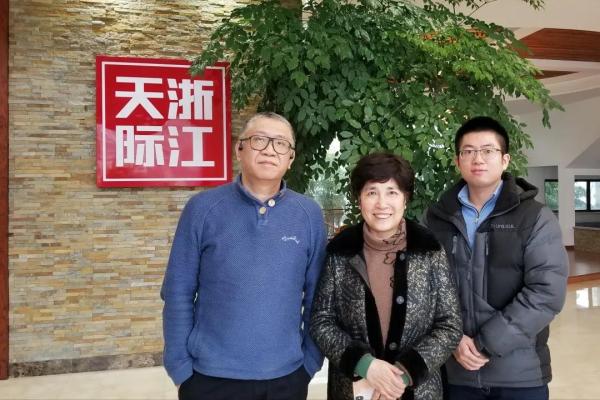
Figure 8 Mao Saichun (middle), founder of Sky Transformer, took a photo with the research group (picture provided by the research group).
(1) the reality of small and medium-sized entrepreneurs
In March 2018, in today’s headline Q&A community "Wukong Q&A", some netizens created an entry: "What is the mentality of the bosses of manufacturing SMEs now?" 1028 answers were uploaded and collected 1016 times in a year.
Overall perception, the mainstream mood is pessimistic and negative, complaining about everything from policy to market, but there are also many objective reflections.
A business owner wrote, "Small and medium-sized enterprises are unsustainable, which is the only pain in the development of industrialization. Since the reform and opening up, the extensive manufacturing industry has come to an end. The model of similar products, low quality, and single-price marketing is gone forever. The thinking of being greedy for perfection, quick success, and running the market by pulling connections will not survive. Think about Japanese screws, zippers and their century-old enterprises, and think about how people survive! It is not only high-tech that can survive, but Excellence is fundamental. Poor workmanship, environmental pollution and lack of integrity must be corrected. My opinion is subtraction, removing the float, specializing in the industry that I am good at, narrowing my business scope (even if it is a screw), using limited funds on the cutting edge, and persevering to tide over the difficulties. "
Another netizen said, "Many small and medium-sized enterprises habitually consider them together with the lack of money. Of course, there is nothing wrong with this. It is true that many small and medium-sized enterprises are short of money. But what small and medium-sized enterprises really lack is not money, but technology, talents and market! To talk about the mentality of SME bosses, let’s put it this way: I have worked in SMEs for more than ten years, and I feel that SMEs are very weak in vitality. Few SMEs can survive for ten years, and those that have existed for more than ten years can still have less vitality. Most SMEs are abandoned by the market because their products are not competitive … What’s more, most of the products made by SMEs are highly homogeneous, and market competition is price competition for them. Who? But the problem is that as long as any industry enters the dead end of price competition, product quality will inevitably go wrong. Small problems only affect short-term sales fluctuations, and once mass quality problems occur, they are likely to be directly fatal. There are not many high-level managers in small and medium-sized enterprises, and most employees in small and medium-sized enterprises have not received professional and systematic on-the-job training. Everyone does things by experience from management to employees. There is no absolute standard, and there is no formal management system. Management is more about human feelings … Many things need to be purified by the market, not to encourage them. "
Another netizen said: "Entrepreneurs who have had ideals and made real contributions to the country are mostly ashamed of their families if they have not been ashamed of society. Let’s take a look at the current business environment. There are few innovations in quality and technology, and most of them are discussing model innovation, relying on model design and’ burning money’ theory to make quick money! We have also been brainwashed and educated to re-learn and keep up with the situation, otherwise life will lose without even slag! This is the embodiment of the vicious capital! "
(2) unavoidable things: time, change or disappearance.
The dilemma is long-term, and it can’t be broken by one stroke. A large number of small and medium-sized business owners in the real situation are usually the combination of founders, operators and managers, and each individual is burdened with extremely heavy pressures.
Many business owners who are engaged in simple assembly and processing are still entangled in whether they can switch to manufacturing-it takes a long time to accumulate their own products according to their own processes and raw materials.
Many comments satirize that most business owners are influenced by their own culture and environment, all with the idea of gaining immediate benefits, ignoring backward technology and innovation, resulting in increasingly serious supply quality efficiency and poor product quality.
If we look at it from another angle, technological innovation pays attention to combining technology with business: foreign intelligent manufacturing is combining real business. And most of our enterprises are mainly transforming and looking for future business. In fact, small and medium-sized enterprises with fragile survival are relatively unbearable. Not everyone can learn this. Excellent enterprises can fight their way out because too many peers are afraid and unwilling to invest and prepare in advance.
2.KDF 2: Staff and staff progress

Fig. 9 corporate culture wall of yilei wool spinning (picture provided by the research group)
Academician Liu Yuanzhang concluded that the essence of total quality management is to improve the overall quality of enterprises.
The quality of products depends on the quality of work, and the quality of work is mainly a human problem. How to tap people’s positive factors and improve quality management and restraint mechanism is an important link in quality work; Standardize people’s behavior, the relationship between people, and the relationship between people and things, so that quality management is no longer the management of a few people such as technology and inspection, but should become a management activity in which most people participate together as a corporate culture.
The scientific nature of quality management comes from all the data, and the original quality data in the production process are kept, counted and analyzed by the team, which is why all the sample enterprises have sunk their focus on education and training.
Not all small and medium-sized private enterprises have no vision, muddle along, and be safe when they are small. There is another situation that is even more terrible: strategy is out of touch with implementation-the strategic desire of decision makers is so high that no one can effectively curb it; The executive layer has formed two skins because of the low quality of employees and the inability to keep up with the rhythm.
A considerable part of corporate culture (see Figure 9) is extracted from books and documents, but the real corporate culture can’t be mechanically copied, it is the group consciousness and behavior under the long-term training of entrepreneurs, and no amount of pseudo-cultural training can be recognized by the grassroots employees.
Third, policy recommendations: continuous optimization at the top and tolerance at the end.

Note: The pictures are provided by the research group.
(A) to create an external development environment for improving the quality of SMEs
The overall economic problem of "quality" in the top-level design of the government should strengthen the study of the socio-economic relationship reflected by the quality category, especially the socio-economic conditions for improving quality-paying attention to the soil and environment where the problem grows, including the quality of economic growth, social governance, environmental quality, quality of life, quality of work and quality of vocational skills education.
(B) the construction of small and medium-sized enterprises to improve the quality of the rule of law integrated tools
Market economy is an economy ruled by law, and the first dimension of promoting quality improvement lies in purifying the soil environment, forcibly correcting the mentality of business owners, and forcibly intervening in market failure links through the hands of the government.
Forced intervention must rely on the vertical penetration of the vertical supervision system from top to bottom, with respect for market rules and people’s livelihood wishes as the basic premise, clear up the old knowledge of the past cognitive boundaries, maintain the normal ethical order of "price by quality" and "high quality and good price", and forcibly correct the trading mentality and behavior, so as to provide the possibility for small and medium-sized enterprises to compete fairly for domestic consumption upgrading.
Forced intervention should say "no" to inferior quality from the sanctions mechanism. The thunder attack of the new market supervision policy must directly poke at the problems that the people have strongly reflected. The essence is to provide "best service" to the enterprises that do their duty safely-to create a "good business environment" that can make the people who do their duty have no distractions, be good and live comfortably, and to create a fair competitive market environment.
(C) Innovation of small and medium-sized enterprises to improve the quality of public product research and development
The "quality ecology" needed by the fragile small and medium-sized enterprises should at least include: high-quality technical education, high-quality financing services, high-quality R&D transformation and consumer (market) mentality. To continuously maintain and improve the ecological quality required by enterprises, the role of the government does not lie in one or several government departments, which cannot be ignored, let alone ignored.
(D) to promote the quality of small and medium-sized enterprises to improve governance changes.
Only when the top level is continuously optimized, the end is willing to let go, and the process is inclusive and enlightened can we truly realize the modern transformation of contemporary governance. If modern governance blindly emphasizes social autonomy or market freedom, it is an out-and-out false proposition. In the pluralistic co-governance system of government, society and market, "Made in Zhejiang" has been in no hurry for 11 years, and the choice of behavior depends on the market rules that conform to the law of value, reflecting the behavior that the government should have in modern governance and creating the most international domestic practice paradigm of quality improvement.
Note: The photos in this article are provided by relevant enterprises unless otherwise specified.
